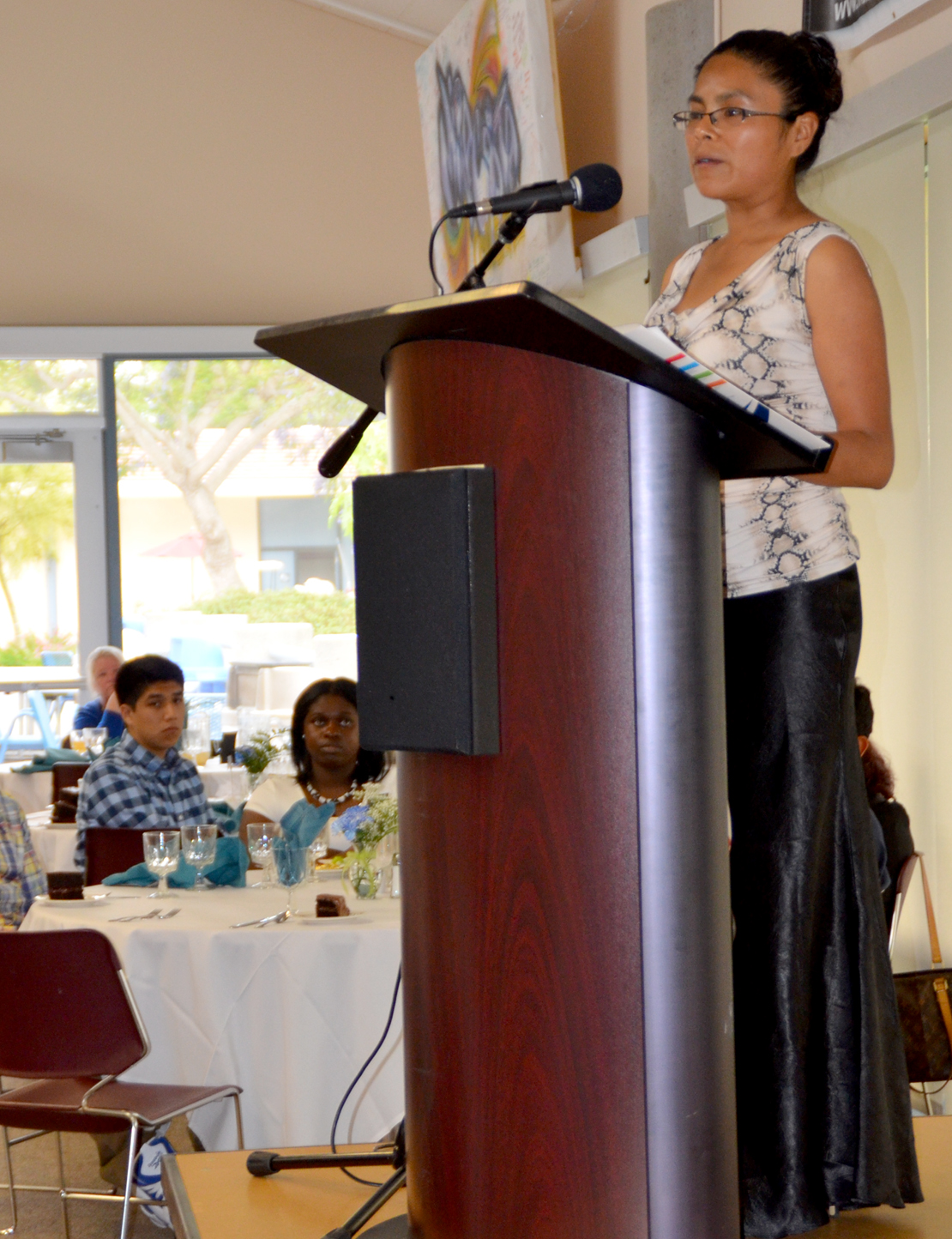What’s Behind Low Success Rates for Hispanic Students?

Rogelio Martinez wanted to leave his parents’ home in Riverside to go to college, but at the same time he didn’t want to live too far away from home.
After arriving at the campus of MiraCosta college, Martinez was homesick, a common experience for many Hispanics who are the first in their family to go to college. During his second year of school, Martinez’s father suffered a stroke at work.
Unfortunately, his father was no longer able to work and Martinez had no choice but to find a full-time job to pay for school.
While this crisis could have derailed his dream of obtaining a college degree, Martinez chose not become a statistic, one of the many Hispanic students who drop out of college. Instead, Martinez found programs that saved his dream of graduating, and now he’s on track to graduate next May.
“When I knew that my father can’t work anymore,” said Martinez, “I decided to look for programs that would help me to pay my college expenses. I applied for many federal programs, Government waiver, and the EOPS (Educational Opportunity Programs and Services) program.”
After lagging behind other Americans in education for generations, Latinos have significantly narrowed the gap. According to newly released data from the Census Bureau, the Hispanic dropout rate reached a record low of 14% in 2013 compared to 32% in 2000. These figures reveal the clear progress Hispanics have made over the past decade, showing how the Hispanic community has also made progress in college enrollment at two- and four-year schools.
However, enrollment is only the first step toward college success. Retaining students is critical but often difficult, because many first-generation students are unaware of campus resources and don’t receive family support. According to Alex Gonzalez, a program specialist at San Diego County Office of Education, research shows that students benefit from educational programs outside the classroom. “I have been witness to the great work some schools are doing to bridge this gap. However, I’ve also witnessed the opposite, which later causes alienation between schools and families,” said Gonzalez.
Poverty and family obligations often prevent students from taking advantage of these opportunities. In many Latino families, Gonzalez explains, parents are forced to work two jobs, investing less time in their children’s educational goals. As a result, parents remain unaware of the programs that schools offer.
Moreover, Lisa Montes, a student specialist at MiraCosta, asserts that many students are uninformed of valuable programs available to them. “Latino students don’t know about Encuentros, Puente, and EOPS,” said Montes.
Encuentros, a non-profit organization founded in 2003, strives to encourage boys in high school to attend college and explore early career options. “Encuentros at MiraCosta College helps to motivate Latino boys from dropping out of college,” Montes said. “Our mission is to stimulate and help the students locate adequate resources for college.” With non-completion rates at roughly 90% for Latino men attending UC campuses, programs like Encuentros are critical.
In addition to Encuentros, MiraCosta’s EOPS program is a state-funded program designed to engage and retain students who are economically, socially, and educationally disadvantaged. The program provides book vouchers, priority registration, and counselors who work exclusively with EOPS students to help them achieve their academic goals. Montes believes it’s crucial for Latino students to be aware of programs like Encuentros and EOPS since they often keep students motivated.
Juana Reyes, an accounting student, current senator of Associated Student Government, and newly elected vice president of the Community Learning Center (CLC), feels the EOPS program enabled her to achieve her dream of going to college, and she recommends this program to low-income Hispanic students. According to Juana, EOPS gave her another way to achieve her career goal and “If I didn’t have the EOPS program helping me to succeed in college, I never would be here,” said Reyes, whose next goal is to transfer to Cal State San Marcos.
The situation of Hispanic educational accomplishment is cause for national concern. Another organization that helps students is San Diego County Office of Education (SDCOE).
SDCOE provides programs to students in juvenile court and community schools, migrant education, special education, early education, and outdoor education. With approximately, 115,000 students who are English learners out of 498,000 students in San Diego County, teachers and administrators are focused on helping this demographic achieve the literacy skills required for language arts, mathematics, science, social studies, and art.
Mónica Nava, a senior Director of Student Services & Programs Division, explains that the learning and leadership division of the “SDCOE has supported districts in San Diego County to develop dual-language programs of instruction and it has helped our county to increase the number of dual-language programs with 40 new programs in the last 4-5 years.”
Nava also explains that the major goal for Migrant Education is for students to graduate from high school and go to college.
The College Assisted Migrant Program (CAMP) supports selected freshmen migrant students, ensuring their success during their first year of college. The CAMP program collaborates with CAL State San Marcos University (CSUSM), providing information and guidance to students and parents about the application process for universities. The CAMP link at CSUSM is http://www.csusm. edu/camp/
While the number of Latinos in college has increased over the past five years, the issue of decreasing dropout rates remains unresolved. Hispanic students should continue researching federal programs designed to help them cover school expenses and achieve their academic goals.
Low income families need to be more aware of the requirements and government programs that the schools offer their children. Unfortunately, “the impact of students not graduating from high school and college can reduced the amount of time for civic engagement and successful financial preparation for retirement,” said Mónica Nava.





